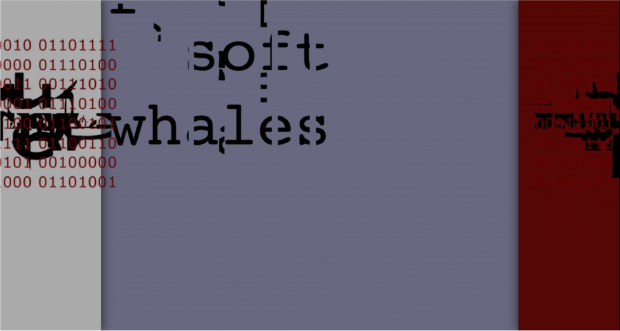Entropic Texts
Entropic Texts is an interactive html5 browser-based artwork co-authored with Jason Nelson. This piece debuted at ISEA2015 (International Symposium of Electronic Art) in Vancouver, Canada, as a part of the exhibition ‘New Text: An Exhibit about Literary and Artistic Explorations into What It Means to Read, Write, and Create’ Curated by Dene Grigar. The theme of ISEA2015, and thus this exhibition, was ‘disruption’.
The idea behind this artwork/digital poem/electronic literature piece, was to consider entropy through a variety of different means. The first way, was through creating an imaginary space where the entropy actually worked faster – imagining a world where there was a corner of the earth in which things aged and decomposed quicker. For this we chose a junkyard – a space of decay. Secondly we considered how entropy would affect certain types of data, and how it could be represented through data – both visual and textual. For this we decided to use a variety of glitching techniques. Finally, we considered how a conceptual entropy could affect a website interface, as the user moved through it.
What resulted, is a web space where the interface and the story are tied together. The interface scrolls through pages that open up like theatre curtains on a z axis, so there is only scrolling involved. The piece is visually set in a junkyard (taking the pictures for this is a story in itself!), and as the viewer moves further into the z axis of the work, the ‘decay force’ of the space becomes stronger, as measured by a graph that appears every few scrolls. As the decay force moves between the normal earth rate, and 100%, the images, text, and other elements of the interface become glitched, more difficult to read, and less user-friendly, until by 100% it is practically impossible to view properly. Throughout the piece, there are hotspots and other hidden elements for the viewer to explore, that pop up new pieces of poetic text.
This isn’t a fancy trick of code – we created each page/scroll/image with an intentional amount of glitch, and planned this out on a percentage scale. This allowed us to directly engage with the concept of how to represent glitch through text, and digital poetry.
Jason’s talents and my own complimented each other nicely in this piece (as they have in the previous work we have created together, Camberland). We are both keenly interested in science and natural phenomena, so entropy was always already a theme we could easily agree on. We both have creative writing backgrounds, and Jason was indeed at one time my professor for electronic literature and digital poetry. Glitch and sci-art are themes often seen in my work, and I like how beautifully broken data can be at once conceptually dense, academic, and poetic.
(Source: http://alintakrauth.com/entropictexts)
Interactive Depth Interface
Entropic Texts is an experiment in using text, image, and an interactive interface, to explore the notion of entropy. Entropy is nature’s tendency towards decay. Thus, it is entropy that predicts the arrow of time, and the length of the life of all things – living and material. As you scroll through this artwork, you are lead into a world where the ‘force’ of decay gets slowly stronger, to the point where text, images, and moving image, become glitched and decayed beyond recognition. This imaginary world of quickening decay is represented by the junkyard. What we often call junkyards are spaces that were once collections of adored or useful items, that have succumbed to entropy, thus they are both clear metaphorical and physical spaces of decay. Using a combination of the artists’ own poetry written while visiting junkyards, and generated text, we seek to experiment with the life and decay of digital data.
This work is intended to be read both ways. Once the end is reached – 99% decay force, the piece can then be scrolled back through, reversing the arrow of time, and thus reversing entropy.The act of creating a digital interactive artwork feels a lot like fighting with the forces of entropy – as an artist you are creating a work that is constantly attempting to break itself. Sometimes a large portion of the artist’s role is to resurrect broken data. This process of creation and destruction of data, while central to our theme, was also self evident in the creation of the work itself.
(Source: http://www.secrettechnology.com/)



